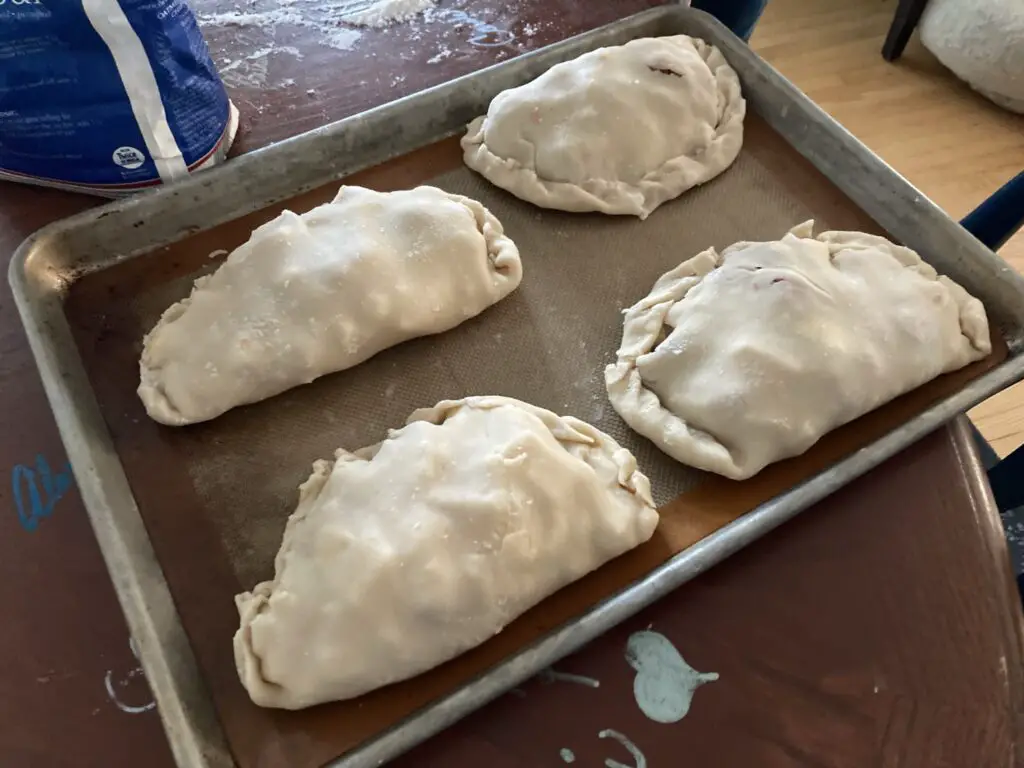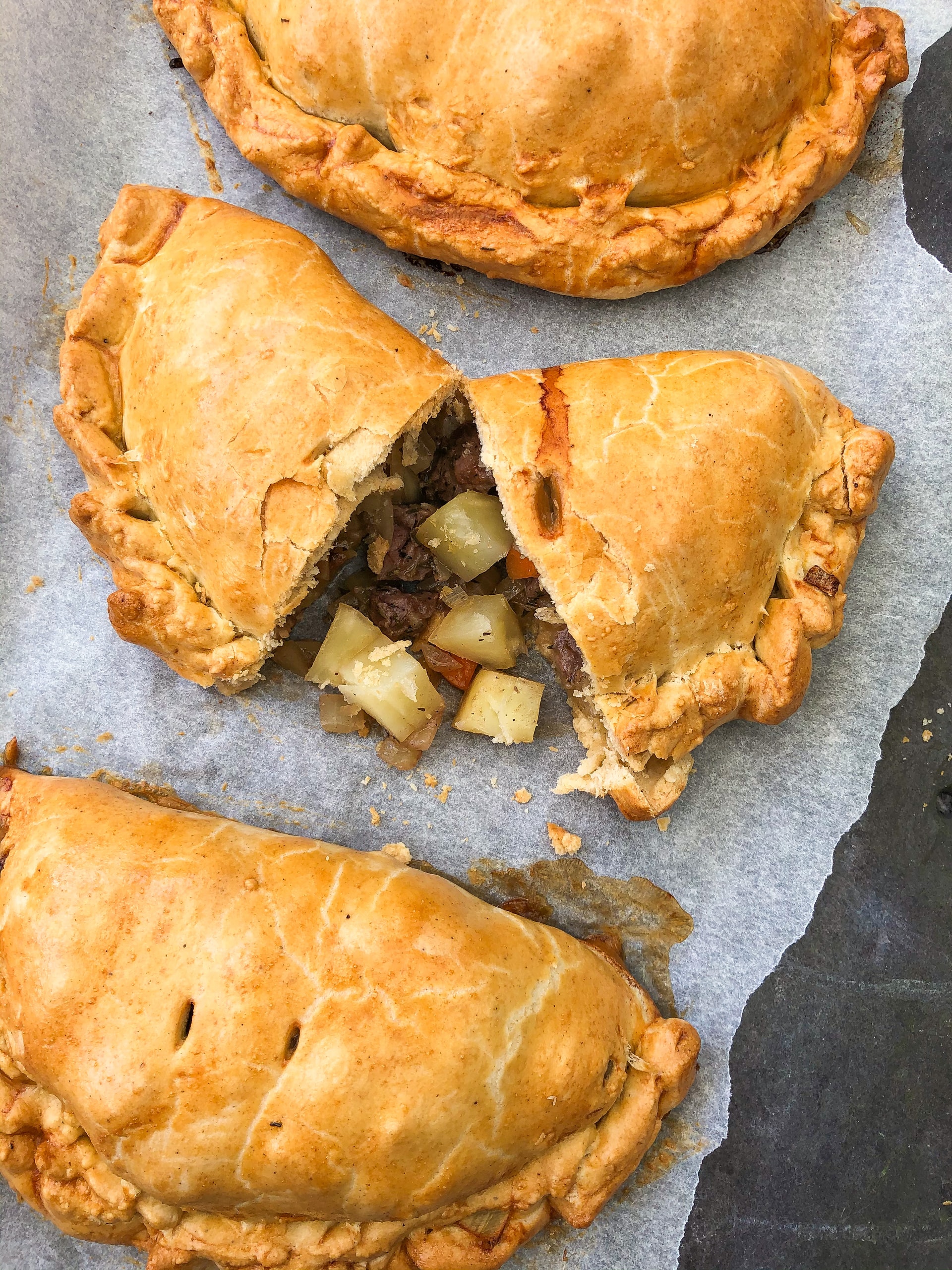If there’s one dish that embodies the spirit of Michigan’s Upper Peninsula, it’s the humble pasty. A savory hand pie, pasties were originally brought to Michigan in the 19th century by Cornish miners who sought their fortunes in the region’s copper and iron mines. The pasty’s convenient, portable nature made it the perfect meal for miners working long hours underground, often eating their lunches with soot-streaked hands. Today, the pasty has transcended its working-class roots to become a beloved regional specialty, enjoyed by Michiganders of all backgrounds.
The History of the Pasty
The pasty (pronounced “pass-tee”) has its origins in Cornwall, England, where it was a staple for tin miners. The original Cornish pasty was a no-frills meal, consisting of a sturdy crust filled with diced meat, potatoes, onions, and rutabaga (also known as swede). The thick, crimped edge was not meant to be eaten but served as a handle for miners to grip with dirty hands, discarding the crust after finishing the filling. As the Cornish settled in Michigan’s Upper Peninsula, they brought their culinary traditions with them, adapting the pasty to the ingredients available in their new home.
A Taste of Tradition: The Classic Michigan Pasty Recipe

Whether you’re a Michigan native or simply a fan of hearty comfort food, making your own pasties at home is a delicious way to connect with the state’s culinary history. This classic recipe sticks closely to traditional fillings, offering a taste of the Upper Peninsula’s rich heritage.
Ingredients:
For the crust:
- 4 cups all-purpose flour
- 1 cup lard or shortening, chilled and cubed
- 1 teaspoon salt
- 1 cup cold water
For the filling:
- 1 lb beef (chuck or round), diced into small cubes
- 1/2 lb pork, diced into small cubes
- 2 large potatoes, peeled and diced
- 1 large onion, finely chopped
- 1 rutabaga, peeled and diced (optional, but authentic)
- Salt and pepper to taste
- 1 tablespoon butter, cut into small pieces
For assembly:
- 1 egg, beaten (for egg wash)
Instructions:
- Prepare the Crust:
- In a large bowl, mix the flour and salt. Cut in the lard or shortening using a pastry cutter or your fingers until the mixture resembles coarse crumbs.
- Gradually add cold water, mixing until the dough comes together. Be careful not to overwork it; the dough should be soft but not sticky.
- Divide the dough into six equal parts, shape them into discs, wrap in plastic, and refrigerate for at least 30 minutes.
- Make the Filling:
- In a large bowl, combine the diced beef, pork, potatoes, onion, and rutabaga. Season generously with salt and pepper, ensuring all ingredients are evenly mixed.
- Assemble the Pasties:
- Preheat your oven to 400°F (200°C). Line a baking sheet with parchment paper.
- On a lightly floured surface, roll out each dough disc into a circle about 8 inches in diameter.
- Place a heaping cup of filling onto one half of each circle, leaving a 1-inch border. Dot with small pieces of butter.
- Fold the dough over the filling to form a half-moon shape. Crimp the edges tightly to seal, either with your fingers or a fork. Transfer the pasties to the prepared baking sheet.
- Brush the tops with the beaten egg to give them a golden, shiny finish.
- Bake the Pasties:
- Bake in the preheated oven for 45-55 minutes, or until the crust is golden brown and crisp.
- Allow the pasties to cool slightly before serving. They are traditionally enjoyed warm, often with ketchup or a rich brown gravy.
A Slice of Upper Peninsula Life
Serving a pasty is more than just a meal; it’s a slice of Michigan history. Each bite offers a taste of the hardworking heritage of the Upper Peninsula, where pasties continue to be a community staple, sold in bakeries, served at festivals, and enjoyed at family dinners. Whether you’re visiting the shores of Lake Superior or making them in your own kitchen, pasties are a comforting, enduring reminder of the Upper Peninsula’s mining past and culinary traditions.
So, gather your ingredients, roll up your sleeves, and get ready to bake your way into a piece of Michigan’s history with this classic pasty recipe. Perfect for a cozy family meal or as a hearty lunch on the go, pasties are sure to become a beloved addition to your cooking repertoire.


